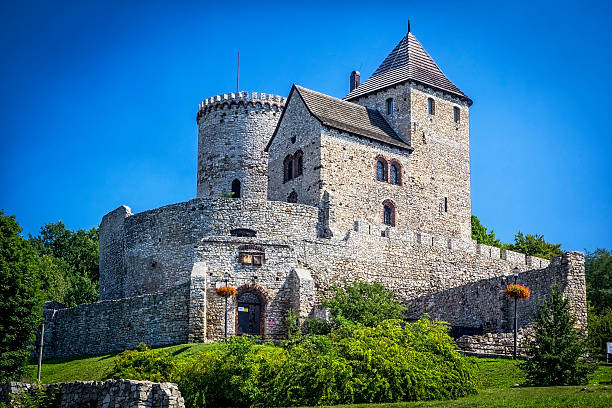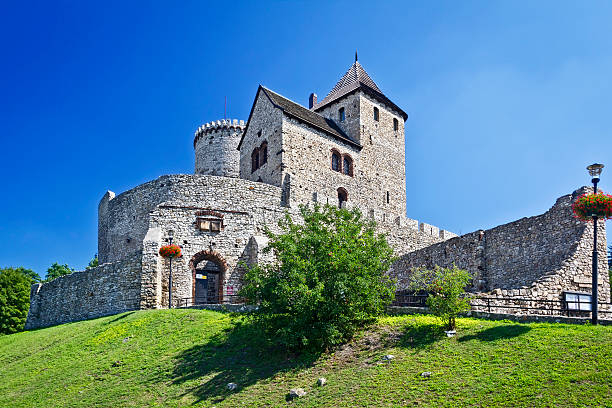Bedzin Castle
In the 11th century, a wooden fortress was built in the Polish town of Bedzin. By the 14th century, it had been replaced by a stone one, which still exists today. Multiple stone walls defend the interior houses and courtyard, which was crucial during the various fights and sieges that occurred at Bedzin. Bedzin was devastated by Swedish military forces in the 17th century, and subsequently by the Nazis during WWII, when the local Jewish community was targeted. Despite its tragic history, Bedzin Castle is a haunting reminder of Poland's past.
In 1956, the castle became the home of the Zagbie Museum. The museum houses several collections: one dedicated to armament from medieval to World War II times; another to the history of the Bdzin Castle; a third to the castles of other nearby castles founded by Casimir the Great (Eagle Nests Trail or Szlak Orlich Gniazd); and a fourth to the military history of the Bdzin region. The castle includes two towers, one cylindrical and one square. Smaller structures were connected to the towers. There were three tiers of fortifications, and the castle was linked to the city walls, sections of which may still be seen today.
Location: Będzin, Poland













